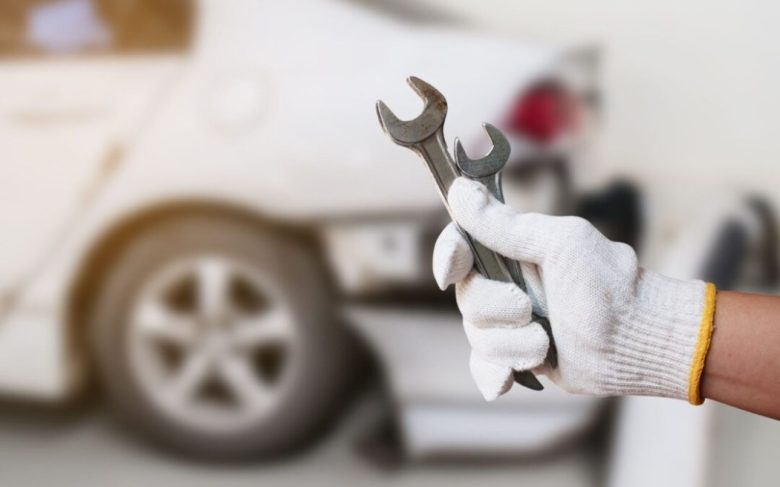The cost of buying a car isn’t just the initial outlay; you also have to pay for regular repairs and maintenance. Wear and tear are inevitable, but your driving style significantly affects how quickly your car deteriorates. Reckless driving, neglecting basic inspections, and not paying attention to road conditions can lead to premature failure and costly repairs. By following a few basic steps, you can significantly extend the life of your car, ensure it continues to run better, and save significant money in the long run. This book provides important driving guidelines to prevent overloading your car’s key systems, ensuring it runs smoothly for years to come.
Gentle Driving Habits:
Your driving style affects the lifespan of your car. To prevent excessive wear on the engine, transmission, and brakes, drive calmly. Avoid sudden acceleration or deceleration. Hard braking and rapid starts place a heavy load on the drivetrain and significantly accelerate the wear of the brake pads and rotors. Instead, pay attention to the flow of traffic and maintain a safe distance from the vehicle in front. This allows you to accelerate and decelerate slowly. Turning at high speed also puts significant stress on your tires and suspension components. Careful driving not only keeps your car’s components in good condition but also improves fuel economy, saving you even more money.
Maintaining Your Tires:
Tires are the only thing connecting your car to the road. Therefore, keeping them in good condition is crucial for safety and to reduce wear and tear. Check your tire pressure regularly to ensure it’s within the manufacturer’s recommended range. You can find these readings in your owner’s manual or on the driver’s door jamb. Under-inflated tires create more friction, which leads to increased fuel consumption and uneven wear. Over-inflated tires can make the ride bumpy and unstable. It’s also crucial to rotate and align your tires according to the schedule in your maintenance manual. Proper wheel alignment prevents your car from pulling to one side and ensures even tire wear, extending tire life and protecting your suspension.
Check Your Fluids Regularly:
Your car’s fluids are essential for proper operation, and keeping them at the correct level is crucial to preventing serious engine failure. Regularly check your engine oil, coolant, brake fluid, and transmission fluid. Engine oil prevents moving parts from rubbing together and overheating, so dirty or low oil levels can cause serious damage to your engine. Antifreeze (or coolant) keeps your engine at the correct temperature. Low engine oil can cause overheating, especially in extremely hot or cold conditions. Brake and transmission fluid are also crucial to the proper functioning of these systems. Most of these tests are easy to perform at home, but the best way to keep your car in good condition is to change your fluids regularly.
Road Conditions to Watch Out For:
Maintaining your road surface can protect your car’s tires, wheels, and suspension from numerous hazards. Potholes, speed bumps, and uneven dirt roads can cause significant damage if you’re not careful. Hitting a pothole at high speed can cause a bent rim, damaged tires, and even misalign your car. When you see a speed bump, slow down to a crawl before driving over it. This helps reduce suspension vibration. If you frequently drive on gravel roads or poorly maintained roads, be aware that these can accelerate the wear and tear on your tires and undercarriage. Driving carefully and staying alert can help you avoid these hazards and prevent unnecessary damage to your car.
Conclusion:
These simple driving and maintenance habits can significantly improve the health of your car and your finances. You would rather not be a timid driver; you want an experienced driver who understands the long-term benefits of careful driving. You can proactively reduce the stress on your car’s critical components by driving smoothly, keeping your tires in excellent condition, checking your fluids, and paying attention to road conditions. This proactive approach means fewer unexpected repairs, better fuel economy, and a more reliable driving experience. Please consider implementing these tips now to maintain your car in top condition for the long term.
FAQs:
1. How often should I check my tire pressure?
You should examine your tire pressure at least once a month and before long trips. As the seasons change, you may need to check your tire pressure more often, as temperature fluctuations can affect it.
2. Does warming up your car’s engine before driving extend its lifespan?
Modern cars don’t need long warm-up times. The best way to prevent engine wear is to drive gently for the first few minutes. This allows the oil to circulate and reach the correct temperature, enabling the engine to function optimally.
3. Is it dangerous to drive with a nearly empty tank?
Yes, driving with an empty tank can be harmful. The fuel pump in the tank needs fuel to stay cool. If the fuel level in the tank is too low, the pump can overheat and fail prematurely.
4. How does aggressive driving affect my car’s transmission?
Sudden acceleration and deceleration heavily stress the gears and clutches in the transmission. Internal components may overheat and wear out quickly as a result, necessitating costly repairs or transmission replacement.
5. Can cruise control prevent wear?
Cruise control on highways can help prevent wear on your car by maintaining a constant speed. This prevents excessive acceleration and deceleration, which reduces stress on the engine and drivetrain and improves your car’s fuel economy.



